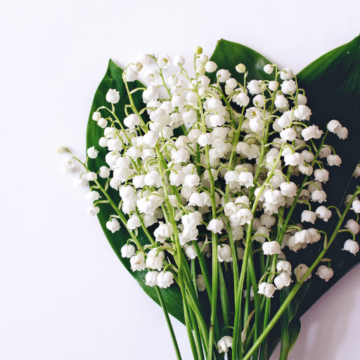Spring has to be one of our favourite times of year here in Australia. The trees are starting to bud, the air is thick with the scent of blooming flowers and the sun is starting to set a little later, providing those beautiful warm nights on the verandah. It’s also an exciting season for flowers, with so many gorgeous spring varieties popping up over the next month or so, ready to steal the show in your arrangements and bouquets.
Let’s take a look at a few of our favourite spring blooms.
Ranunculus
Ranunculus is a popular spring-flowering bulb that flourishes wherever it grows, from chilly Tasmania and Victoria all the way up to the subtropical environment of South Queensland.
The wide variety of colours that ranunculus flowers come in make them a super versatile addition to any bouquet – whether on their own or as an accent flower. If you’re using ranunculus flowers on their own, you can use a mix of colours to make them more eye-catching. Other colourful flowers like tulips, peonies and dahlias also work well alongside ranunculus!
Season: September to November
Lily of the Valley

Lily of the valley is a sweetly scented, pendent, bell-shaped white flower native throughout the temperate Northern Hemisphere in Asia and Europe. This delicate flower has a short season throughout Australia’s spring and makes a beautiful, soft touch to your arrangements, especially for weddings.
The origin of its name comes from the legend of Saint Leonard, who is said to have slain the last dragon in England. The legend says that lilies of the valley sprouted in clusters wherever the saint’s blood was spilled and earned its meaning of “the return of happiness”.
Season: September to October
Lilacs

Lilacs are one of the most fragrant flowers in the world. They’re also one of the most popular, with their vibrant bunches of purple blooms. Native to southeastern Europe and eastern Asia, lilacs are able to grow easily in Australia, so you can find them at most growers in the spring months.
Lilac’s meaning of reminiscence and first love came originally from Greek mythology. The nymph Syringa feared the advances of Pan, the god of the forests, so she turned herself into a lilac bush. When Pan realised this, he cut the hollow reeds of the shrub to form the pan flute, memorialising his first love. The more you know, huh?
Season: October
Magnolias

If you’re looking for flowers in season in spring, magnolias are a good choice. They are a symbol of spring and can be found all over the world. Magnolia trees bloom with large white or pink flowers that have delicate, soft petals. Magnolias are one of the most popular blooms for weddings and make great bouquets or centrepieces at events like parties and banquets.
Magnolia’s meaning of dignity is derived from its tall, hearty structure. In the American South, magnolia trees will grow to magnificent heights and endure scorching hot summers.
Season: August to October
David Austin Roses

David Austin Roses are named after David Austin, a British rose breeder. They’re known for their fragrant, many petalled blooms and can be found in a variety of shades of white, yellow, pink and red. The difference between David Austin Roses and regular, field-grown roses is the abundance of extra petals – many varieties almost look like a different flower altogether. Some varieties are available early in the season and others make us wait in anticipation for their beauty and scent. My all time favourite is Fair Bianca, a creamy white rose with burgundy pink outer petals.
Despite the differences, this variety of roses maintains the meaning of love that all roses carry, making it ideal for wedding bouquets.
Season: October to May
With so many beautiful blooms available in Spring, it makes sense to start to plan your bouquet offerings around these. In season flowers are going to be fresher, more vibrant and more fragrant than other varieties that may have had to be grown outside of their regular season. For local growers in Victoria, make sure to check out our two-part series on local growers in Victoria. You’re sure to find the best flowers possible, all while supporting local Aussie businesses.












